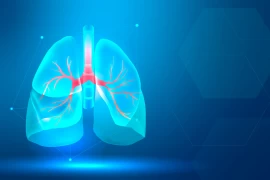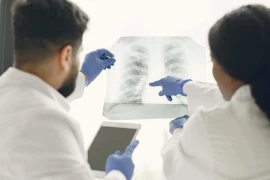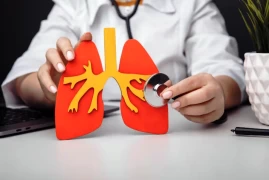
Balloon Catheter Application in COPD Treatment: A Perspective from a Chest Diseases Specialist
- Balloon Catheter Application in COPD Treatment: A Perspective from a Chest Diseases Specialist
- Treatment Methods for COPD
- Balloon Catheter Application in COPD Treatment
- Success Factors for Balloon Catheter Application
- Advantages of Balloon Catheter Application
- In Conclusion...
Chronic Obstructive Pulmonary Disease (COPD) has become a significant public health issue worldwide. COPD occurs as a result of chronic and progressive narrowing of the airways in the lungs, particularly influenced by factors such as smoking, air pollution, and genetic predisposition. Along with symptoms that significantly reduce quality of life, COPD carries the risk of serious complications and mortality. Therefore, an effective treatment strategy holds key importance in managing the disease.
Treatment Methods for COPD
In the treatment of COPD, along with pharmacological and non-pharmacological approaches, invasive interventions may also be required in advanced cases or in patients unresponsive to other treatments. At this point, balloon catheter application holds an important place in COPD treatment. As a Chest Diseases Specialist, I would like to provide a detailed perspective on the effectiveness, indications, technical details, and potential complications of this procedure.
Balloon Catheter Application in COPD Treatment
Balloon catheter application is typically performed during an invasive procedure called bronchoscopy. In this procedure, a flexible tube called a bronchoscope is directed into the patient's lungs through the nose or mouth. A balloon catheter at the tip of the bronchoscope is used to open and expand narrowed or obstructed airways. Balloon catheter application is usually used for three main purposes:
- Stenting: In areas with airway narrowing or obstruction, usually a metal stent is placed. These stents keep the airway open, improving airflow and restoring respiratory functions.
Thermal Ablation: In advanced cases of COPD, scar tissue or tumors may form in the airways. In such cases, a technique called thermal ablation is used to destroy damaged tissues in the airways. High-energy heat or cold can be effective in destroying these damaged tissues.
Bronchial Plasty: To open narrowed or obstructed airways, a balloon catheter is placed into the airways and then inflated. This allows for the expansion of the airways and improves respiratory functions.

Success Factors for Balloon Catheter Application
For balloon catheter application to be successful, patient selection, pre-procedural assessment, and proper technical application are of great importance. Lung function tests, imaging studies, and clinical evaluation of the patient are critical in determining the indications for the procedure. Additionally, potential complications of balloon catheter application should be explained to the patient in detail, and informed consent should be obtained before the procedure.
Advantages of Balloon Catheter Application
Advantages of balloon catheter application include its minimally invasive nature, short recovery time, and rapid alleviation of symptoms. However, like any medical intervention, balloon catheter application also carries risks. These risks may include bleeding, infection, bronchospasm, and complications such as stent migration following stenting.
In Conclusion...
In conclusion, balloon catheter application in COPD treatment can be an effective option in advanced cases or in patients unresponsive to other treatments. However, before the application of this procedure, a detailed evaluation specific to the patient should be conducted, potential benefits and risks should be considered, and an informed consent process with the patient should be carried out.

Spc. Dr. Özgür İnce
Chest Diseases Specialist





